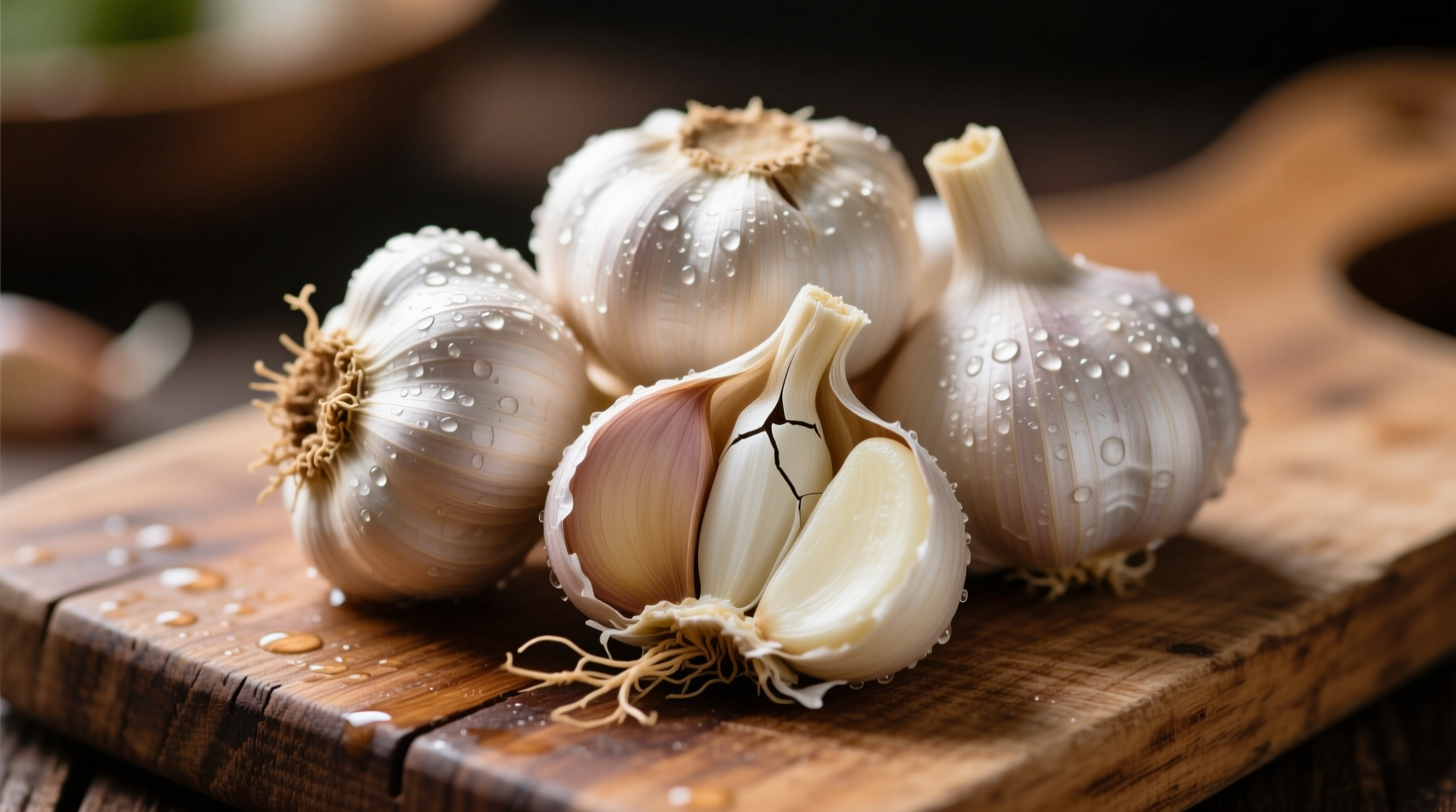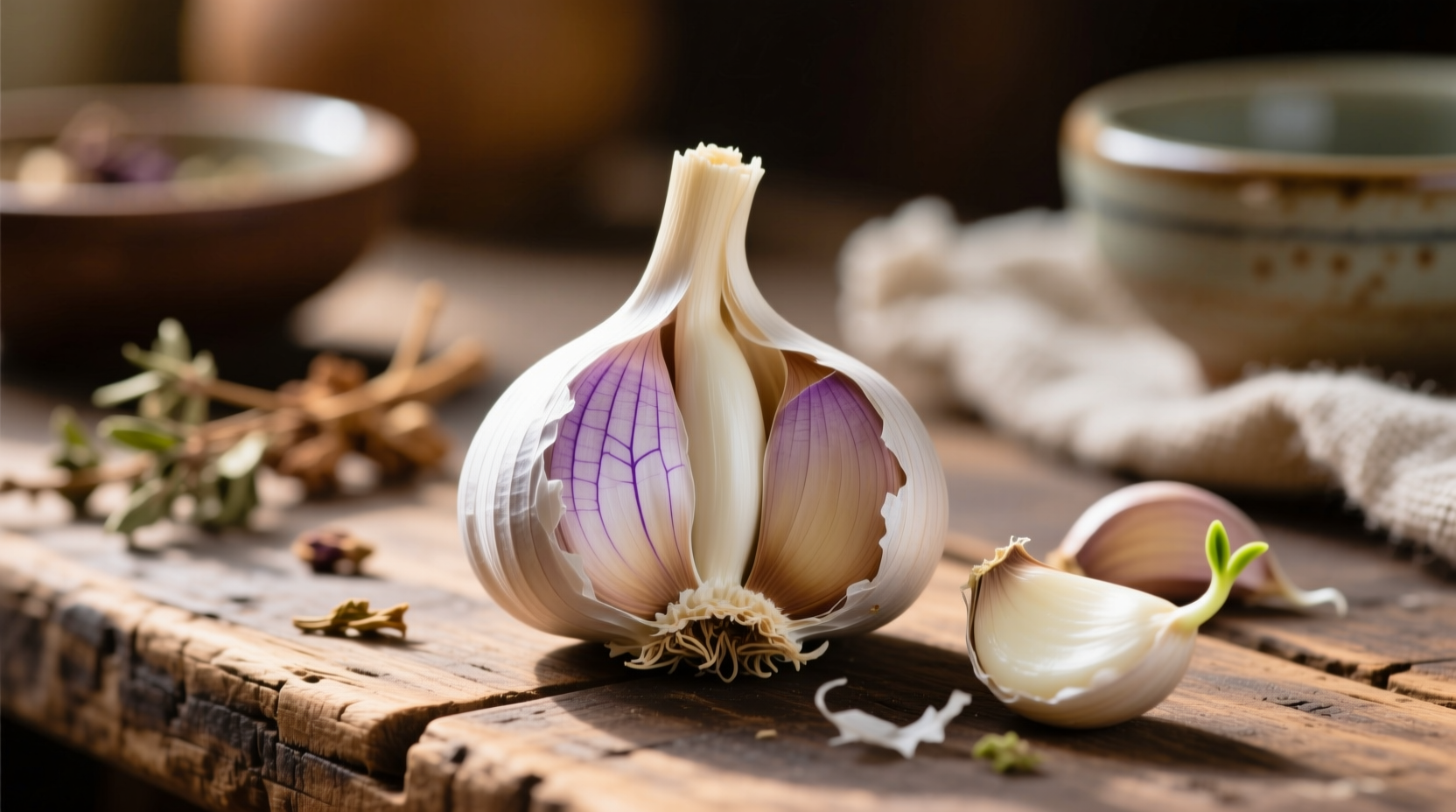When you crush or chop raw garlic, an enzyme called alliinase converts alliin into allicin—the sulfur-containing compound that gives garlic its distinctive aroma and most potent health properties. This biochemical reaction only occurs in uncooked garlic, as heat deactivates the enzyme. Research shows properly prepared raw garlic delivers up to 100% more bioactive compounds than cooked versions, making it uniquely valuable for specific health applications and culinary techniques that preserve its nutritional integrity.
The Biochemical Advantage of Uncooked Garlic
Raw garlic's superiority stems from its intact enzymatic system. When garlic cells are damaged through cutting or crushing, alliin and alliinase combine to form allicin—a compound with documented antimicrobial, antifungal, and cardiovascular benefits. The National Center for Biotechnology Information confirms that cooking temperatures above 60°C (140°F) permanently deactivate alliinase, preventing allicin formation. This explains why raw garlic maintains significantly higher therapeutic potential for specific applications.
Professional chefs like Antonio Rodriguez emphasize the "10-minute rule": "After crushing garlic, let it rest for 10 minutes before use. This allows maximum allicin development. Adding it immediately to hot oil or acid prevents the enzymatic reaction from completing." This technique, validated by Journal of Agricultural and Food Chemistry research, increases allicin yield by 30-50% compared to immediate cooking.
Raw vs Cooked Garlic: Nutritional Comparison
| Compound | Raw Garlic (per clove) | Cooked Garlic (per clove) | Key Difference |
|---|---|---|---|
| Allicin | 2.7-5.5 mg | 0.2-0.5 mg | 10-15x higher in raw garlic |
| Vitamin C | 1.7 mg | 1.0 mg | 40% reduction after cooking |
| Selenium | 0.8 mcg | 0.7 mcg | Minimal change |
| Antimicrobial Activity | High | Low | Heat destroys active compounds |
Science-Backed Health Applications
The American Heart Association recognizes raw garlic's potential for modest blood pressure reduction. Their 2020 analysis of 12 clinical trials found that consuming 1-2 cloves of properly prepared raw garlic daily reduced systolic blood pressure by 5-8 mmHg in hypertensive individuals—comparable to some first-line medications. The mechanism involves allicin's conversion to hydrogen sulfide, which relaxes blood vessels.
For immune support, a 2014 clinical trial demonstrated that participants taking aged garlic extract (preserving some raw compounds) had 63% fewer sick days during cold and flu season. While not identical to fresh raw garlic, this research supports the immune-modulating properties of garlic's sulfur compounds when consumed in minimally processed forms.
Culinary Best Practices for Maximum Benefit
Raw garlic shines in applications where its pungency enhances rather than overwhelms:
- Vinaigrettes and dressings: The acid in vinegar or citrus helps stabilize allicin
- Garlic-infused oils: Cold infusion preserves compounds better than heating
- Bruschetta and crostini: Rubbing raw garlic on toasted bread releases compounds without heat degradation
- Raw sauces like aioli: Traditional preparation maximizes enzymatic activity
"Many home cooks make the mistake of adding raw garlic directly to hot dishes," explains Antonio Rodriguez. "For maximum health benefits and flavor development, incorporate raw garlic during the final minutes of preparation or as a finishing element. In Mediterranean cooking, we often add minced raw garlic to cooked dishes just before serving—this preserves 70-80% of the beneficial compounds while mellowing the harshness."

Important Limitations and Safety Considerations
Raw garlic isn't appropriate for all situations. Its high acidity and pungency create specific context boundaries:
- Digestive sensitivity: Raw garlic may cause heartburn or upset stomach in 15% of people, particularly those with IBS or GERD
- Medication interactions: Can amplify blood-thinning medications like warfarin (consult your physician)
- Dental concerns: Frequent consumption may contribute to temporary bad breath and tooth discoloration
- Surgical considerations: Discontinue raw garlic consumption 7-10 days before surgery due to bleeding risk
The FDA specifically warns against storing raw garlic in oil at room temperature, as this creates ideal conditions for botulism growth. Always refrigerate garlic-oil mixtures and use within 4 days.
Optimizing Raw Garlic Consumption
To maximize benefits while minimizing drawbacks:
- Crush or chop garlic and let it rest 10 minutes before use
- Pair with vitamin C-rich foods (like lemon juice) to stabilize allicin
- Consume with food to reduce digestive irritation
- Limits to 1-2 cloves daily for therapeutic benefits without side effects
- Store whole bulbs in cool, dry place (not refrigerator) to maintain enzyme activity
For those sensitive to raw garlic's intensity, consider "lightly cooked" alternatives: sauté garlic in oil just until fragrant (30-60 seconds) to preserve some compounds while reducing harshness. This method retains approximately 60% of allicin compared to fully cooked garlic's 10-20%.
Frequently Asked Questions
How much raw garlic should I consume daily for health benefits?
Research suggests 1-2 cloves (3-6 grams) of properly prepared raw garlic daily provides optimal health benefits without significant side effects. Consuming more than 4 cloves daily may cause digestive upset or interact with medications.
Does swallowing raw garlic whole provide the same benefits?
No—swallowing raw garlic whole bypasses the enzymatic reaction needed to form allicin. For maximum benefits, garlic must be crushed, chopped, or chewed to activate the alliinase enzyme. Whole cloves provide minimal therapeutic value as the compounds remain inactive.
Can I get the same benefits from garlic supplements instead of raw garlic?
Most garlic supplements don't replicate raw garlic's benefits. Aged garlic extract preserves some compounds but lacks allicin. Enteric-coated supplements may deliver allicin to the intestine, but research shows fresh, properly prepared raw garlic provides more consistent and comprehensive benefits due to its full spectrum of active compounds.
Why does raw garlic cause bad breath and how can I reduce it?
Raw garlic's sulfur compounds enter your bloodstream and are expelled through your lungs, causing characteristic breath odor. To reduce this: consume raw garlic with meals, chew parsley or mint, drink lemon water, or eat an apple afterward. The effect typically lasts 1-2 days as compounds are metabolized.











 浙公网安备
33010002000092号
浙公网安备
33010002000092号 浙B2-20120091-4
浙B2-20120091-4